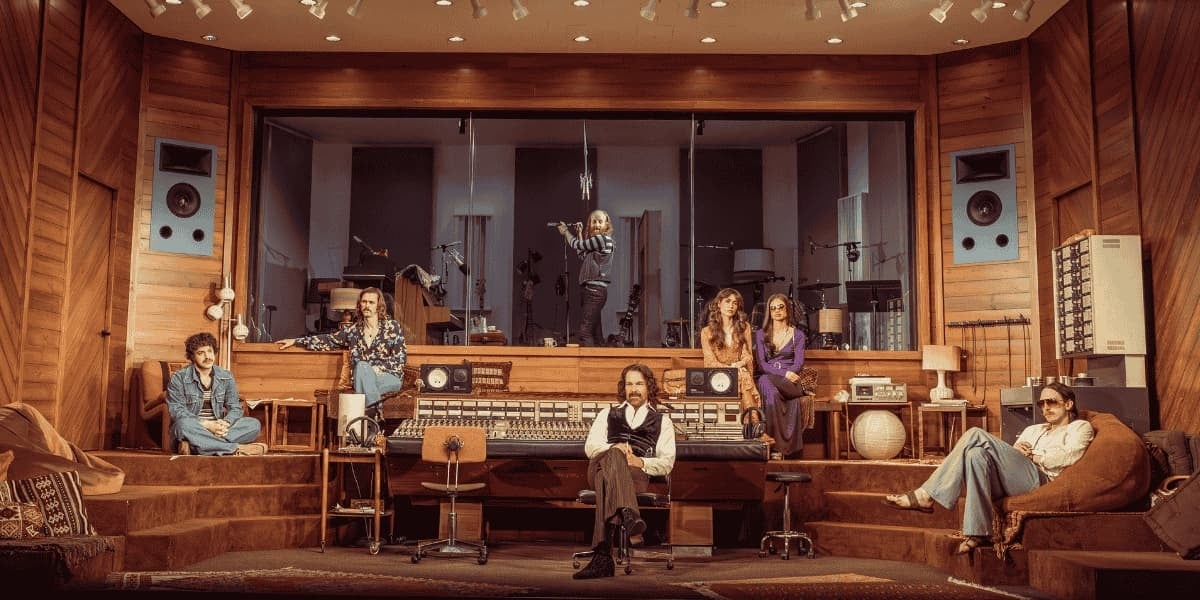The Best of Both Worlds: Why Plays with Music Are Having a Moment
Posted on
| By
Hay Brunsdon
Theatre has always thrived on variety. Straight plays bring us the thrill of great writing and performance; musicals sweep us up in spectacle and song. But somewhere between the two lies a form that, with quiet confidence, is claiming its place in the spotlight: the play with music. Productions like Stereophonic - the most Tony-nominated play in history and recently extended to November at the Duke of York’s Theatre - show just how rich and rewarding this hybrid can be.
Music as atmosphere, not just entertainment
Unlike a full musical, where songs often move the story forward, plays with music use sound as texture. In Stereophonic, the music places us inside the raw, messy, creative energy of a 1970s recording studio. The songs don’t interrupt the drama—they deepen it. Like fan favourite, KENREX, music punctuates and enhances the story without distraction, its impact heightened by the fewer songs compared to a traditional musical.

Unpredictability and emotional fractures
What makes plays with music so powerful is their unpredictability. We’re not swept away in polished numbers but jolted by music that heightens the drama. In Good Night, Oscar, for instance, Sean Hayes’s onstage piano performances feel raw and revealing—an emotional crack in the play’s surface rather than a rehearsed showcase. And in Stereophonic, a song can pause a couple’s bickering—no more words are needed; the music itself carries the emotion, speaking louder than dialogue ever could.
Actor-musicians at the centre
The rise of actor-musicians has also fuelled this form. Watching performers play their own instruments live adds a thrilling immediacy—no orchestra pit, no separation. Even true musicals like The Curious Case of Benjamin Button, Once and Girl from the North Country all create moments that felt closer to folk sessions than staged performance. The actor-musician model shows how music can feel organic, authentic and intimate.
Flexibility of form
Plays with music don’t have to obey the structural “rules” of musicals—where every song must justify itself dramatically—nor do they confine themselves to the spoken word. This freedom allows artists to experiment with narrative and mood in ways that feel fresh, often making the piece more unpredictable and gripping.
A bridge between audiences
Plays with music can appeal to theatregoers who might shy away from traditional musicals, as well as music fans who don’t usually watch any theatre at all; throwback to all the Pulp fans flocking to watch Richard Hawley’s Standing at the Sky’s Edge last year!
This crossover quality helps explain their rise over the past decade. Far from competing with plays or musicals, this hybrid form enriches the theatre landscape. Productions like Stereophonic prove that when music and drama work hand in hand, the result can be something uniquely alive—an art form that speaks to how deeply songs shape our stories.
Reflecting contemporary storytelling
Perhaps the biggest reason for the surge in plays with music is that they mirror how we live now: our lives are underscored by music. We move through playlists, concerts, headphones, and shared soundtracks with friends. Plays with music capture that rhythm of modern experience while still offering the dramatic heft of a play.
Songs that serve the story
What makes Stereophonic striking is its restraint with music. Every song feels essential, serving the story rather than filling space. Unlike some modern musicals, where certain numbers can fade from memory, Will Butler of Arcade Fire—an artist steeped in songwriting—has crafted tracks that are purposeful, memorable, and shape the drama with the precision of a true musician.
Playing until Sat 22 November, book your Stereophonic tickets today.